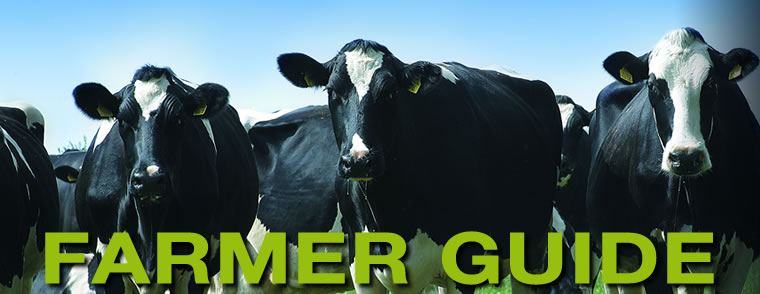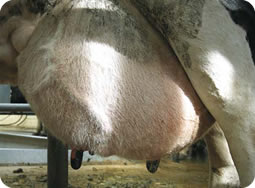
Probability of cure following intramammary antibiotic treatment:
Mastitis caused by Staph aureus (subclinical and clinical) can be difficult to treat and not all treatments result in a cure. Cure rates can vary from 20-70%. The following risk factors reduce the chances of achieving a cure.- Increasing lactation number
- SCC (somatic cell count) > 1 million cells/ml
- Heavy growth of the bacterium when cultured
- More than one quarter affected
- Repeated cases in the same quarter
- Palpable udder abnormalities
- Infected for > 1 month
- The Staph. aureus isolate is resistant to penicillin (it is a penicillinase producer)
- Short duration of therapy
Probability of bacteriological cure following intramammary antibiotic treatment:
| Bacteria | Clinical (lactating) | Sub-clinical (lactating) | At time of drying off |
| Staph. aureus | Very poor | Poor | Moderate |
| Strep. agalactiae | Very good | Very good | Excellent |
| Strep. dysgalactiae | Very good | Very good | Excellent |
| Strep. uberis | Moderate | Good | Very good |
Bacteriological cure: the bacteria are eliminated from the udder
Clinical cure: The cow, udder and milk return to normal and the bacteria may or may not be eliminated from the udder

Farmers Guides
- Optimising the milking routine
- Basic mastitis types and control
- Probability of cure following intramammary antibiotic treatment
- Improving udder health around
drying off - Udder Examination
- California Mastitis Test
- Technique for infusion of a combination of dry cow antibiotic and OrbeSeal®
- Sterile milk sampling for bacteriology
- Collecting and transporting samples
- Risks of feeding dump milk to calves

